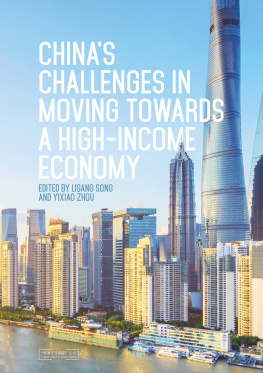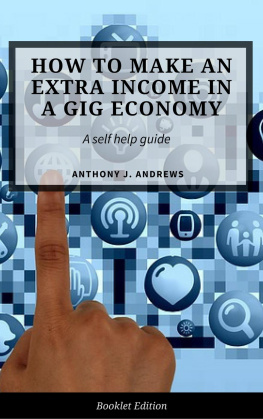
A POST HILL PRESS BOOK
ISBN: 978-1-63758-564-1
ISBN (eBook): 978-1-63758-565-8
Taxes Have Consequences:
An Income Tax History of the United States
2022 by Arthur B. Laffer, Ph.D., Brian Domitrovic, Ph.D., and Jeanne Cairns Sinquefield, Ph.D.
All Rights Reserved
Cover design by Tiffani Shea
No part of this book may be reproduced, stored in a retrieval system, or transmitted by any means without the written permission of the author and publisher.

Post Hill Press
New York Nashville
posthillpress.com
Published in the United States of America
Table of Contents
W e thank those at Laffer Associates and the Laffer Center who have helped us in assembling the data for this book. These include Max Myers, Kenny Smith, Owen Curry, Richard Grant, Nick Drinkwater, Richard Neikirk, Gabby Jensen, and Randi Butler. From Hillsdale College, we thank Larry Arnn, Kyle Murnen, Juan Dvalos, Patrick Whalen, and also Ian Reid from Distant Moon Media. Jennifer Schubert-Akin of the Steamboat Institute and Raj Kannappan of Young Americas Foundation have supported our work on this book, as have Tony and Vicki Batman, Lee Beaman, Robert Bishop, Joel Citron, James Dondero, the Fickling family, Cynthia Fisher, Reza Jahangiri, Michael Joukowsky, Scott Minerd, Steven Shapiro, Rex Sinquefield, Tom Smith, and Richa rd Strong.
For review of our work, the efforts of Richard Salsman of Duke University (including for Brians book The Emergence of Arthur Laffer ), Jonathan J. Pincus of the University of Adelaide, and Michael G. Porter and John Tamny have been distinctly valuable. Our agent Michael Carlisle and his colleagues including Mike Mungiello at InkWell Management have again shepherded our work expertly, as have the professionals at Post H ill Press.
The sources upon which we relied for statistics and details of the tax law include, for tax rates, deductions, and exclusions: the Tax Foundation, Tax Policy Center, and United States Statutes at Large ; for population, employment, inflation, and economic output: databases at the Bureau of Economic Analysis and Bureau of Labor Statistics and the Federal Reserve Economic Data (FRED) warehouse; and for tax receipts and aggregate taxpayer information: the Statistics of Income of the Internal Revenue Service. Further governmental sources include the annual reports of the Secretary of the Treasury and federal budgets and various such reports from th e states.
AER | American Econo mic Review |
AMT | Alternative m inimum tax |
BEA | Bureau of Economi c Analysis |
BLS | Bureau of Labor Statistics |
CEA | Council of Economi c Advisers |
CIT | Corporate income tax |
DJIA | Dow Jones Industri al Average |
Eop | End -of-period |
FRED | Federal Reserve Eco nomic Data |
GDP | Gross Domest ic Product |
IRS | Internal Reven ue Service |
JEC | Joint Economic Committee |
NBER | National Bureau of Economi c Research |
OECD | Organization for Economic Co-operation and D evelopment |
PIT | Personal income tax |
PSZ | Piketty, Sa ez, Zucman |
TCJA | Tax Cut an d Jobs Act |
Chapter 1:
Figure 1
Average Income of the Top 1% Detrended vs. Retention Rate of the Top 1%, 19132008
Figure 2
Top 1%, Top 50% (ex. Top 1%), and Bottom 50% Real Average Income, 19432017
Figure 3
Tax Revenues as a Share of GDP of the Top 1% of Income Earners vs. Bottom 95% of Income Earners vs. Highest Marginal Tax Rate, 19162013
Chapter 2:
Figure 1
Municipal Interest Payments as a Share of Total Reported Income of the Top 1 percent, 19292017
Chapter 3:
The La ffer Curve
Figure 1
Top 1 Percent of Income Reporters Average Tax Rate vs. Top Marginal Tax Rate, 19162017
Figure 2
Retention Rate of the Top 1 percent vs. Average Income of the Top 1 Percent Detrended, 19132018
Figure 3A
Tax Revenue from Top 1 Percent Income Earners vs. The Top Marginal Personal Income Tax Rate, 19432017
Figure 3B
Percent Change in Average Incomes and Average Tax RevenueTop 1 Percent
Figure 4
Average Real Tax Revenues per Top 1 Percent Detrended vs. Retention Rate, 19162017
Chapter 4:
Table 1
U.S. Tax Policy, Income and Tax Revenue for Top 1% of Incomes and the U.S. Economy, 19201929
Top Income Tax Rates in Four Countries, 19101940
Chapter 5:
Figure 1
The Stock Market and Total Trade Surrounding the 1930 Smoot-Hawley Tariff, 19251939
Table 1
U.S. Tax Policy, Income and Tax Revenue for Top 1 Percent of Incomes and the U.S. Economy, 19291944
Figure 2
Top 1% Net After-Tax Income vs. Highest-Bracket Tax Rate, 19291944
Figure 3A
Top 1% Share vs. the U.S. Employment Rate, 19171938
Figure 3B
The Smoot-Hawley Tariff, the Top Marginal Income Tax Rate and the Unemployment Rate, 19171938
Figure 3C
The Smoot-Hawley Tariff, the Top Tax Rate, Income Share of the Top 1 Percent
Chapter 6:
Figure 1
U.S. Unemployment Rate, 19281939
Chapter 7:
Figure 1
Real Federal, State, and Local Tax Revenue in 2018 Dollars, 19291950
Table 1
Real Federal, State, and Local Tax Revenues and GDP in 2018 Dollars, 19291940
Table 2
Real State and Local Tax Revenue, 19291940
Figure 2
Stacked Real State and Local Tax Revenues, 19291940
Table 3
Personal Income Taxes, Corporate Income Taxes, and Sales Taxes Enacted by States, 19291937
Table 3A
Prevalence of Corporate Income, Personal Income and Sales Taxes in 192 8 by State
Table 3B
Prevalence of Corporate Income, Personal Income, and Sales Taxes by State, 19291939
Table 3C
Corporate Income, Personal Income, and Sales Taxes by Number of States, 1929 vs. 19291939
Table 4
State and Local Property Ta x Revenues
Table 5
State and Local Other Ta x Revenues
Table 6
A Comparison of Taxation by Number of States, 1928 vs. 19291939
Chapter 8:
Figure 1
Real GDP and Real Nondefense GDP, 19291956
Table 1A
Government Finances, 19401945
Figure 2
Real Total GDP Per Man-Hour, Real Nondefense GDP Per Man-Hour and Real Nondefense GDP Per Capita, 19301948
Figure 3
U.S. Total Noninstitutional Population, Total Labor Force, Total Employment, and Total Annual Ho urs Worked
Table 1B
Government Finances, 19461950
Chapter 9:
Figure 1
Real GDP and Real Nondefense GDP, 19351950
C hapter 10:
Figure 1
Real GDP Ex-Defense Per Adult Detrended vs. Real GDP Per Adult Detrended, 19392020
Major Tax Rates in 1948-1949 and 19541963
C hapter 11:
Figure 1
Standard of Living: Real GDP Ex-Defense Spending Per Adult, 19392017
Figure 2
Dow Jones Industrial Average Index, 19601970
Figure 3
Percent Change in Taxes Paid and Percentage Point Change in Retention Rate by In come Class
C hapter 12:
Next page









